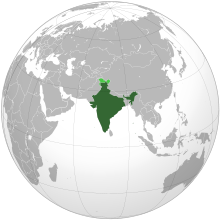India: The Changing Discourse Of NSCN (IM) – Analysis
By Manohar Parrikar Institute for Defence Studies and Analyses (MP-IDSA)
By Namrata Goswami
On March 21, 2012, the National Socialist Council of Nagalim led by Isak Chisi Swu and Thuingaleng Muivah—NSCN (IM)—celebrated its 33rd “Republic Day” in Camp Hebron, the armed group’s headquarters in Nagaland. Situated at a distance of 35 kms from Dimapur, the main town in Nagaland, Camp Hebron is well connected with a metal road in the midst of a picturesque landscape. During the celebrations, Isak Chisi Swu, the Chairman of the NSCN (IM), gave a speech which is notable for several reasons with regard to the Naga peace process underway since 1997.
First, Swu stated that both the NSCN (IM) and the Union government are determined to work out an acceptable resolution to the Naga conflict. This is perhaps the first time that one of the main leaders of the NSCN (IM) has acknowledged the sincerity of the Union government to resolve the issue. On earlier occasions, both Muivah and Swu had blamed the Union government for engaging in delaying tactics which reflected a lack of sincerity to resolve the conflict in a meaningful manner.

Second, Swu acknowledged that the Naga peace process is being addressed at the highest political level in India, the Prime Ministerial level, thereby indicating the importance given to the aspirations of the Nagas by the Union government.
Finally, and most significantly, Swu hoped that a time will come in the future when the NSCN (IM) will no longer view India as an adversary but rather as a collaborator for peace. He went on to state that “I believe the day is not far off”.
These are significant comments from Swu, signalling a distinctive change of discourse by the armed leader. Since the NSCN (IM) works within the framework of a highly centralised political structure known as the Government of the Peoples’ Republic of Nagaland (GPRN), such views enjoy the support of the “collective leadership” as the NSCN (IM) leaders call themselves. The GPRN has a President, Vice President, Prime Minister, Kilonsers (Ministers) and ministries. Each Naga tribe (32 in all) has to elect a Kilonser to the GPRN. The military wing of the GPRN consists of the People’s Army of Nagaland with the Chairman (Isak Swu) as the Supreme Commander, followed by the Defence Minister and the Chief of Army Staff.
A definite resolution of the Naga conflict has significant benefits for the Government of India given the NSCN (IM)’s capability to cultivate other smaller ethnic armed groups in Northeast India to take up arms against the Indian state. Six benefits would accrue if a resolution of the issue were to be effected.
First, it will bring to an end the longest ethnic conflict in Northeast India and which had turned violent in 1956.
Second, it will indicate an acceptance of the Indian Union by the Nagas, an ethnic group that had viewed India’s plural ethos with a great deal of scepticism.
Third, the Union government can enlist the cooperation of the NSCN (IM) towards decreasing the highly insecure status of Manipur today. Amongst the multiple armed groups operating in Manipur, the NSCN (IM) is one of the most powerful especially in the hills areas of Manipur.
Fourth, it will release the energies of the Nagaland state and the Union government to tackle vital issues in Nagaland like poverty and provision of basic amenities to the common people.
Fifth, it will attract the much needed business investments in Nagaland and enable an opening up to Southeast Asia.
Finally, it will open up the state for tourism, a potential source of revenue which has been thwarted till now due to armed violence.
For the reasons stated above, the recent change of discourse from a prominent leader of the NSCN (IM) needs to be duly recognised by policy makers and academia working on armed ethnic conflicts in India. It offers insights into the NSCN (IM) leadership’s willingness to bring about a final resolution to the conflict. What the final resolution document should look like is not hard to conceive. For one, it should include a commitment by the Union government to respect and preserve the unique history and culture of the Nagas. For another, it should include an assurance that the Nagas living in other states of the Northeast are not discriminated against by the dominant ethnic community in these states. It should also aim at rehabilitating the NSCN (IM) cadres and the inclusion of the armed leaders in the power sharing mechanisms of the state of Nagaland. Finally, it should involve a commitment on the part of the NSCN (IM) to accept the Union of India as a viable framework for enjoying democratic rights and bringing about the empowerment of the people.
Originally published by Institute for Defence Studies and Analyses (www.idsa.in) at http://www.idsa.in/idsacomments/TheChangingDiscourseofNSCNIM_NamrataGoswami_300312
